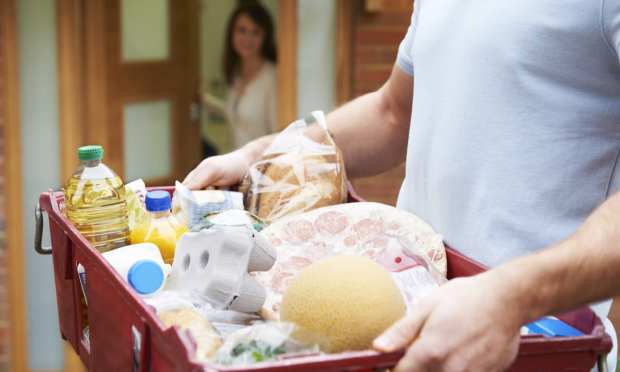Fixing The ‘Broken Economics’ Of Grocery Delivery

Even as an increasing number of consumers across the U.S. get vaccinated, and the contagion concerns that supercharged the digital shift recede from the front of consumers’ minds, many of the habits adopted over the course of the last year are likely to stick. An analysis of the online grocery sector by Bain & Co. from July 2020 found that significant proportion of the increase in online grocery shopping will last into the post-pandemic future. Findings indicated that “online grocery penetration could as much as double in select markets” by 2025, though online grocers would “need to find a much more rapid fix for the broken economics of the channel.”
Though consumers now seek out the convenience of delivery, most are accustomed to the prices of brick-and-mortar grocery. Online grocers are challenged to keep prices low while paying for the labor, the vehicles and the facilities required to meet the eCommerce demand. One of the most common solutions is using a third-party delivery service — namely, Instacart, which as of June accounted for more than half of the online grocery market. For grocers looking to provide eCommerce options in-house, keeping 100 percent of the sale and owning the relationship with their customers, winning the online grocery game may require reconsidering every step of the order fulfillment process.
When it comes to facilities, many grocers have been turning to micro-fulfillment centers (MFCs), mini warehouses that fulfill several thousand orders per week, to optimize their use of space while working faster. As FreshDirect Chief Operating Officer Timothy Knoll told PYMNTS in an interview, “Micro-fulfillment is central to our expansion strategy and underscores our industry innovation. The technology allows us to turn our existing regional facilities into high-velocity automated distribution centers, speeding our expansion and growth into in our existing service footprint.”
At the labor level, many grocers are piloting autonomous delivery solutions. Walmart, for one, has been trying out self-driving trucks to cut back on the labor cost of making deliveries. Meanwhile, supermarket chain Safeway is piloting driverless sidewalk carts to deliver grocery orders, operated remotely by an in-store associate.
Autonomous delivery startup Refraction AI, meanwhile, has developed a bicycle-sized delivery robot, a design the company considers the “goldilocks zone” of robotic delivery. Refraction’s robots’ relatively small size allows for quick deliveries, while the machines remain large enough to carry a sizable load.
“What’s different about [Refraction] is that, conventionally, last-mile delivery in this space happens using DoorDash or Grubhub or something like that,” Refraction CEO Luke Schneider explained to PYMNTS in an interview. “And it’s typically a gig economy worker driving a car, which is great and all, except it’s sort of like bringing a ballistic missile to a knife fight.”
Meanwhile, eGrocer Farmstead is turning to automation not for its vehicles but for its inventory. The company uses its proprietary Grocery OS software to optimize stocking based on a range of factors including consumers’ previous behavior, products’ perishability, and the company’s week-over-week growth.
“The ability to predict means that we control the experience, and the more the experience is under our control, [the more] we can deliver customers a phenomenal experience, and the more customers get a phenomenal experience the more they tell their friends,” Pradeep Elankumaran, co-founder and CEO of Farmstead, told PYMNTS in an interview. “And it’s a pretty nice flywheel — as more customers show up our margins improve, we have the option of even lowering prices to increase even more customers.”
As the already crowded online grocery space only continues to grow in the next several years, with new players coming to the fore every month, it will be interesting to see which innovations fall by the wayside and which prove key to winning the grocery delivery wars.
